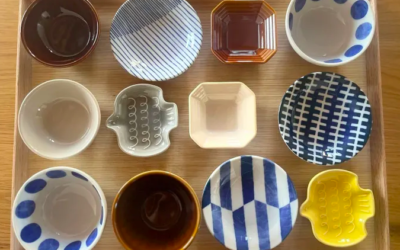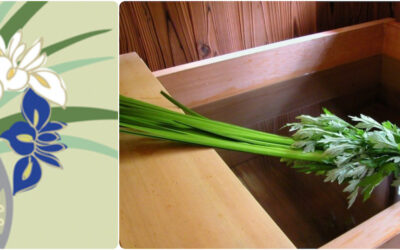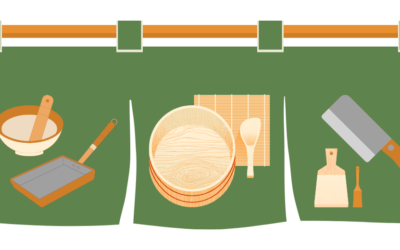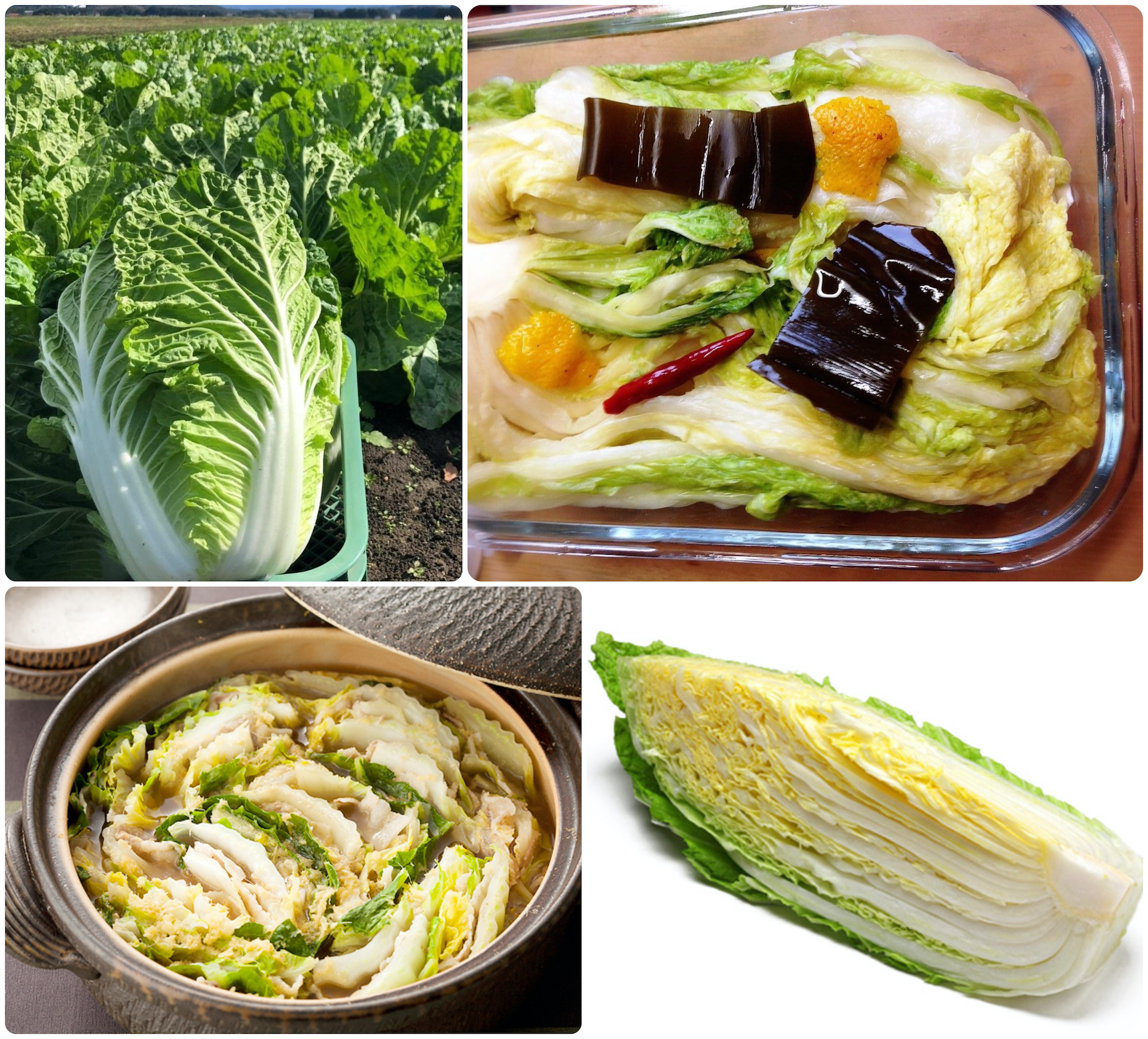
HAKUSAI・白菜
Because hakusai is such a favorite wintertime vegetable in Japan, I assumed it had a long, deep history in Japan’s cookery. Not really. It seems that the original Brassica oleracea ancestor of hakusai is native to the Mediterranean region of Europe. What is today commonly called “Chinese cabbage” or “napa cabbage” is Brassica rapa subsp. Pekinensis, a Chinese cultivar. It was introduced to Japan as recently as 1875 by a Chinese delegation at a trade exhibition. It took nearly 20 years for Japan to develop its own hybrid suitable for commercial cultivation: Nozaki Hakusai No 2, named after Aichi farmer Nozaki Tokushiro.
Hakusai became widely popular early in the 20th century and remains a well-loved, cold-weather staple. Versitile hakusai can be transformed into a sprite pickle to perk up a bowl of rice as easily as it can be made into a bubbling main course nabé to be shared with friends and family on a chilly evening.
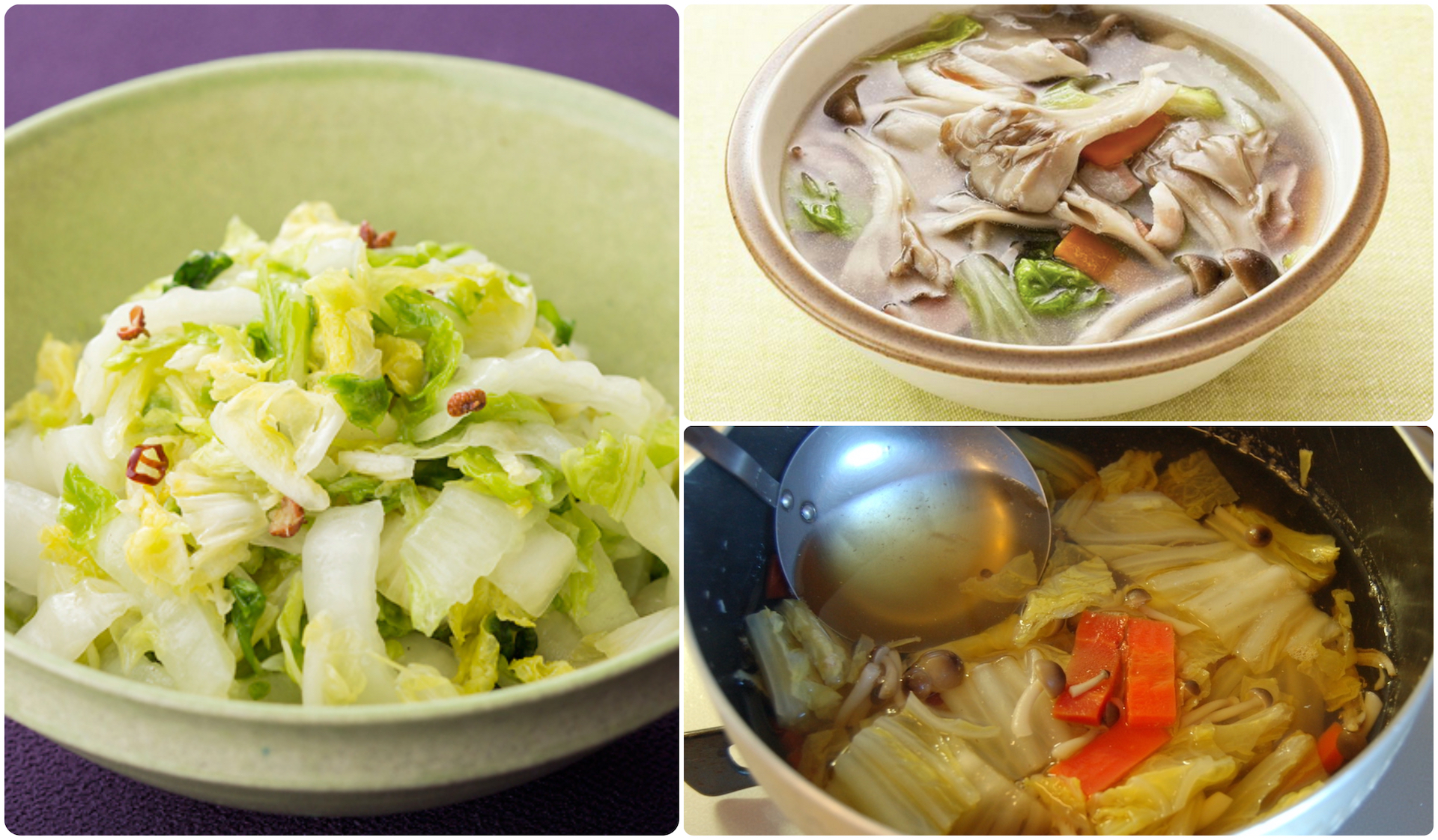
Enjoying HAKUSAI Many Ways
Download a recipe for: HAKUSAI no SENMAI NABÉ (Many-Layered Pork and Napa Cabbage Hot Pot 白菜の千枚鍋 )
Download a recipe for: HAKUSAI no SOKUSEKI-ZUKÉ (Quick-Pickled Hakusai Cabbage 白菜の即席漬 )
For more suggestions on featuring hakusai in a menu, head to the PROJECT Hakusai post.
My January 2023 NEWSLETTER is about hakusai.

